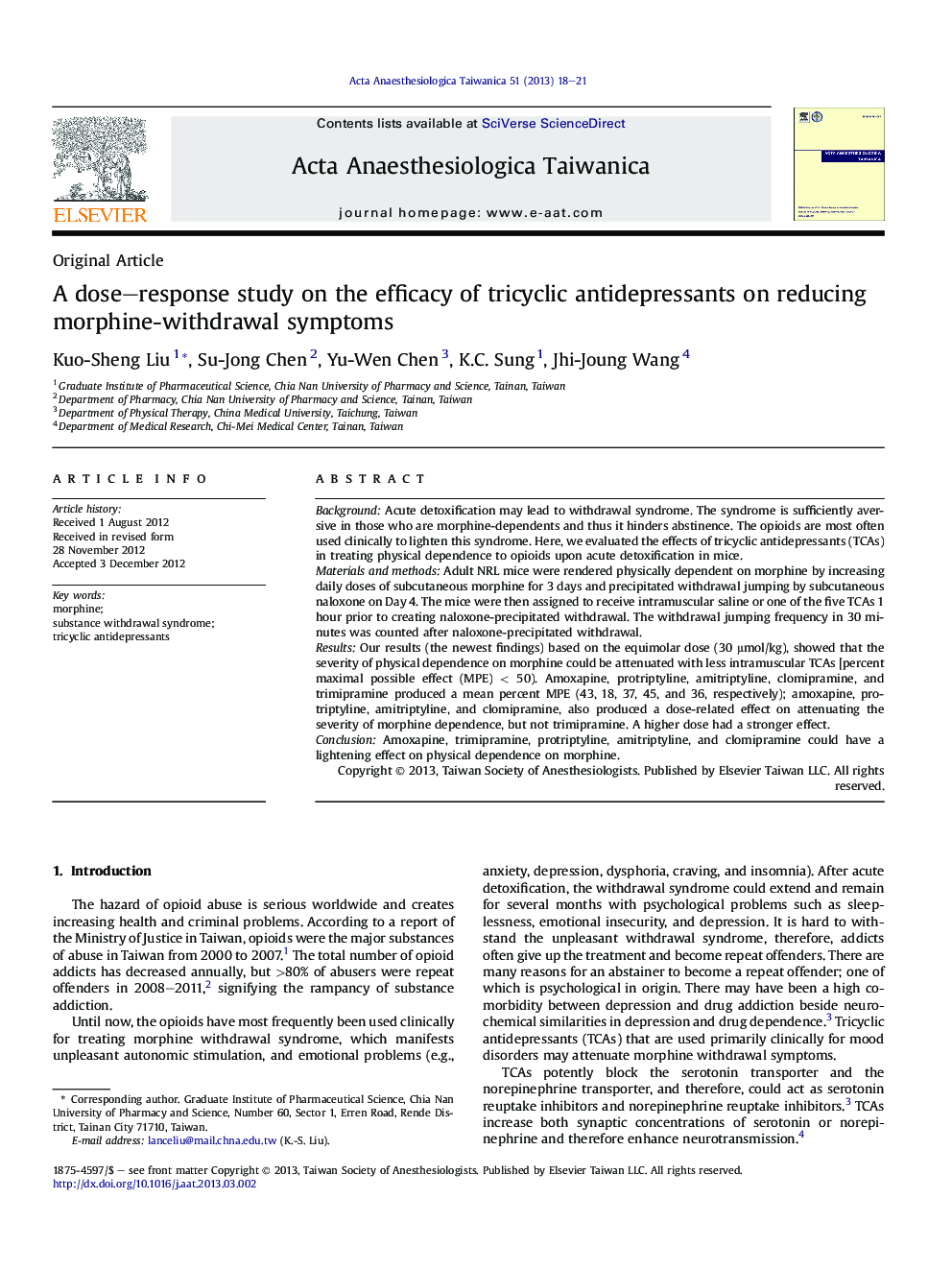| Article ID | Journal | Published Year | Pages | File Type |
|---|---|---|---|---|
| 2741487 | Acta Anaesthesiologica Taiwanica | 2013 | 4 Pages |
BackgroundAcute detoxification may lead to withdrawal syndrome. The syndrome is sufficiently aversive in those who are morphine-dependents and thus it hinders abstinence. The opioids are most often used clinically to lighten this syndrome. Here, we evaluated the effects of tricyclic antidepressants (TCAs) in treating physical dependence to opioids upon acute detoxification in mice.Materials and methodsAdult NRL mice were rendered physically dependent on morphine by increasing daily doses of subcutaneous morphine for 3 days and precipitated withdrawal jumping by subcutaneous naloxone on Day 4. The mice were then assigned to receive intramuscular saline or one of the five TCAs 1 hour prior to creating naloxone-precipitated withdrawal. The withdrawal jumping frequency in 30 minutes was counted after naloxone-precipitated withdrawal.ResultsOur results (the newest findings) based on the equimolar dose (30 μmol/kg), showed that the severity of physical dependence on morphine could be attenuated with less intramuscular TCAs [percent maximal possible effect (MPE) < 50). Amoxapine, protriptyline, amitriptyline, clomipramine, and trimipramine produced a mean percent MPE (43, 18, 37, 45, and 36, respectively); amoxapine, protriptyline, amitriptyline, and clomipramine, also produced a dose-related effect on attenuating the severity of morphine dependence, but not trimipramine. A higher dose had a stronger effect.ConclusionAmoxapine, trimipramine, protriptyline, amitriptyline, and clomipramine could have a lightening effect on physical dependence on morphine.
